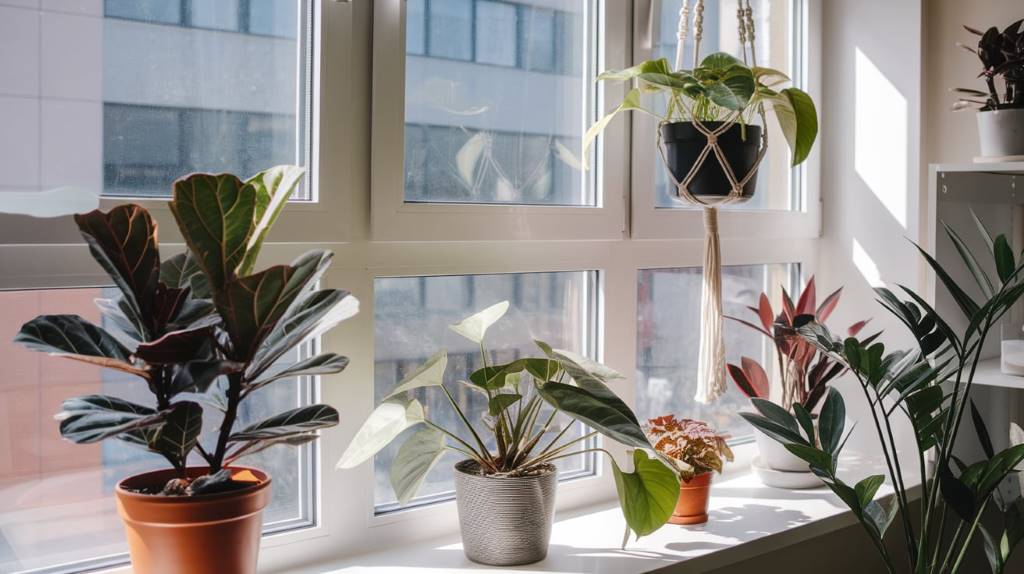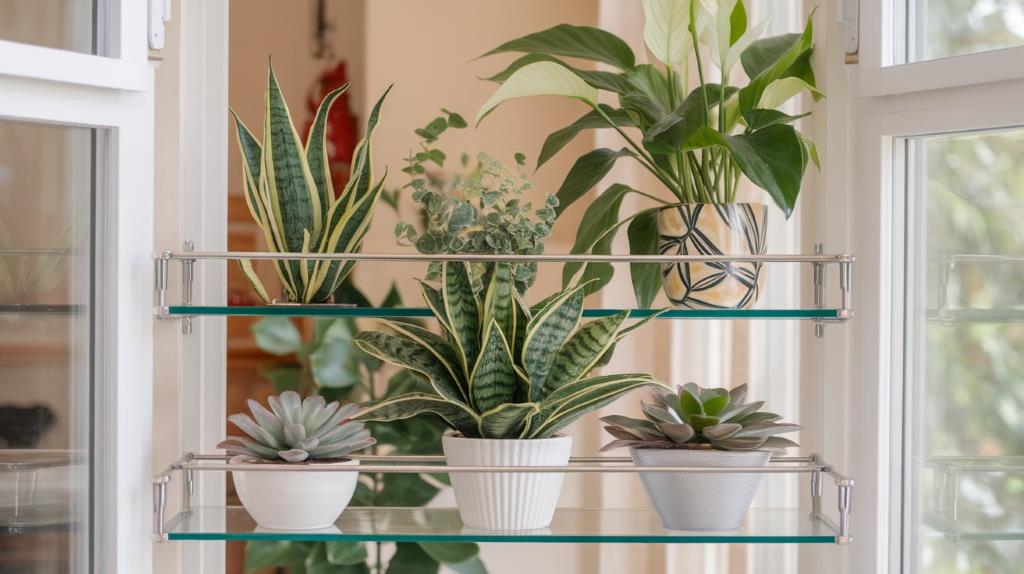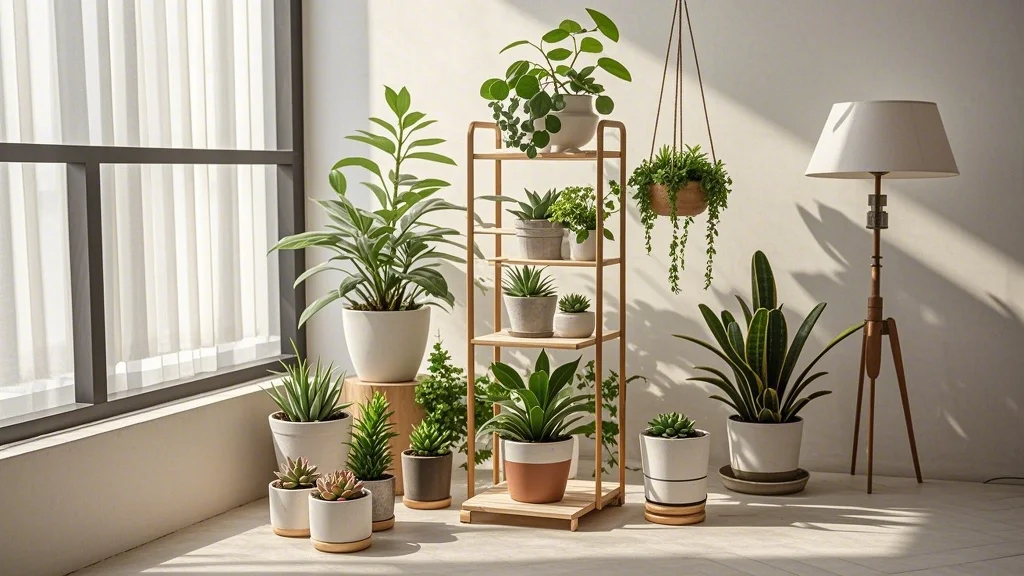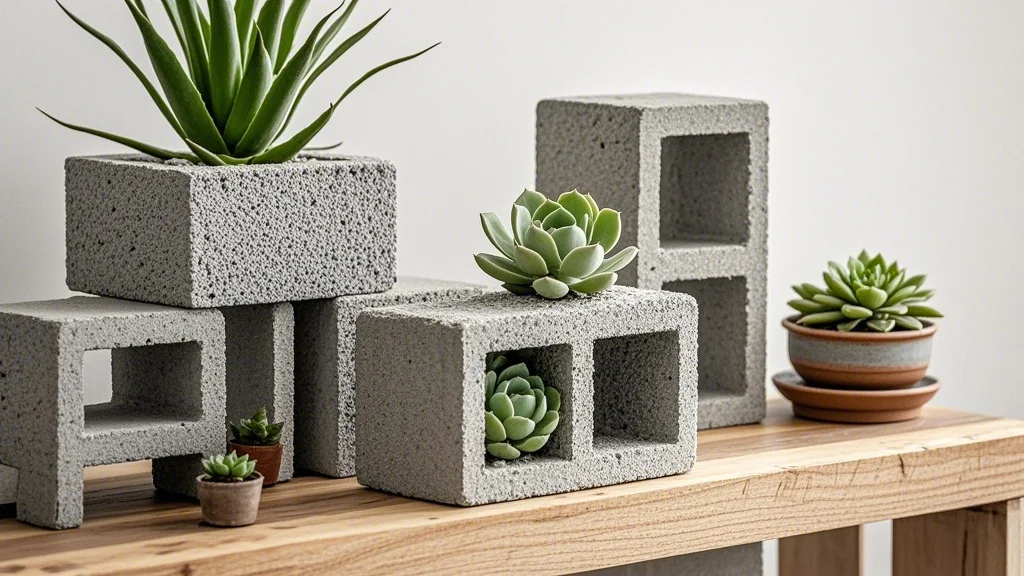For urban gardeners and houseplant enthusiasts, natural light is precious currency. While not everyone has the luxury of sprawling windowsills or south-facing bay windows, strategic shelving can transform even modest window access into a thriving indoor garden. Window-adjacent plant shelves allow you to maximize limited natural light, displaying your collection beautifully while ensuring each plant receives appropriate light exposure.
This guide will walk you through designing, building, and arranging graduated plant shelves that make the most of your window light—turning that single light source into a home for dozens of healthy plants.
Contents
- 1 Understanding Light Distribution Near Windows
- 2 Designing Your Window Plant Shelving System
- 3 DIY Window Plant Shelf Projects
- 4 Plant Placement Strategies
- 5 Enhancing Light Reflection and Distribution
- 6 Maintenance and Care for Window Shelf Plants
- 7 Troubleshooting Common Issues
- 8 Inspiring Window Shelf Arrangements
- 9 Conclusion
- 10 Resources for Further Exploration
Understanding Light Distribution Near Windows

Before designing your shelving system, it’s important to understand how natural light behaves in indoor spaces:
Light Intensity Gradient
Light intensity decreases dramatically as you move away from a window. A plant sitting directly on a windowsill might receive 10-20 times more light than one placed just 3 feet away. This creates distinct light zones:
- Direct zone: 0-1 foot from window (high light)
- Bright indirect zone: 1-3 feet from window (medium light)
- Moderate indirect zone: 3-6 feet from window (medium-low light)
- Low light zone: 6+ feet from window (low light)
Light Direction Considerations
The direction your window faces significantly impacts light quality:
- South-facing windows: Provide the strongest, most consistent light throughout the day
- East-facing windows: Offer gentle morning sun, ideal for many houseplants
- West-facing windows: Deliver afternoon sun, which can be intense and hot
- North-facing windows: Supply the gentlest, most diffused light
Seasonal Variations
Remember that light angles and intensity change with the seasons:
- Winter sun sits lower in the sky, penetrating deeper into rooms
- Summer sun is more direct and intense
- Deciduous trees outside windows create seasonal light fluctuations
Designing Your Window Plant Shelving System
With light dynamics in mind, let’s explore different shelving approaches to maximize your window’s potential:
1. Tiered Window Shelves
Tiered shelves create a “stadium seating” effect, allowing plants at different heights to access light without blocking each other.
Design considerations:
- Use transparent or open shelving materials that won’t block light
- Ensure each tier is set back from the one below it
- Allow 8-12 inches between shelves for plant height
- Consider adjustable shelves to accommodate growing plants
Materials options:
- Glass shelves on brackets
- Wire metal shelving
- Acrylic/clear plastic shelving
- Thin wooden slats with space between boards
2. Graduated Side Shelving
For windows with wall space on either side, graduated shelving creates a “light staircase” effect.
Design considerations:
- Highest shelves closest to window
- Each subsequent shelf steps down as it moves away from window
- Angle shelves to face the window when possible
- Use corner spaces efficiently with angled designs
3. Hanging and Suspended Systems
Utilize the space directly in front of windows with hanging systems.
Design considerations:
- Tension rods between walls for hanging plants
- Ceiling-mounted plant hangers at varying heights
- Window-mounted shelves that don’t block light
- Macramé or chain hangers of different lengths
4. Rolling/Mobile Plant Stations
For flexibility and seasonal adjustments, consider mobile solutions.
Design considerations:
- Wheeled plant carts that can be moved with light changes
- Nesting tables that can be reconfigured
- Lightweight shelving units that can be repositioned
- Plant stands with adjustable heights
DIY Window Plant Shelf Projects
Basic Tiered Window Shelf
Materials needed:
- 3 pieces of 1×8 pine board (cut to your window width)
- 6 decorative brackets
- Wood screws
- Sandpaper
- Wood stain or paint
- Level
- Drill
- Stud finder
Instructions:
- Measure your window width and cut boards accordingly
- Sand all edges smooth and finish with stain or paint
- Use a stud finder to locate wall studs near your window
- Mount the lowest shelf first, ensuring it’s level
- Mount subsequent shelves 10-12 inches above each previous shelf
- Position each higher shelf 2-3 inches farther from the window than the one below
Glass Shelf Light Maximizer
Materials needed:
- 3-4 tempered glass shelves (cut to size)
- Adjustable glass shelf brackets
- Wall anchors and screws
- Level
- Drill
- Glass cleaner
Instructions:
- Mark bracket positions, ensuring they’re level
- Install brackets using appropriate wall anchors
- Position lowest shelf closest to window
- Set each higher shelf back 2-3 inches from the one below
- Clean glass thoroughly to maximize light transmission
- Secure glass shelves to brackets according to manufacturer instructions
Rolling Plant Station
Materials needed:
- Wire utility shelf unit with wheels
- Clear plastic shelf liners (optional)
- Zip ties or shelf clips
- Plant saucers
Instructions:
- Assemble the wire shelf unit according to instructions
- Position shelves at graduated heights, closer together at top
- Add clear liners if needed to support smaller pots
- Ensure wheels lock securely when in position
- Position the unit perpendicular to window for maximum light penetration
Plant Placement Strategies
With your shelving in place, strategic plant placement is crucial for success:
Light Requirement Zoning
Position plants based on their light needs:
- High light plants (succulents, cacti, citrus, fiddle leaf figs):
- Place on lowest shelves closest to window
- Ideal for south and west window positions
- Medium light plants (pothos, philodendron, dracaena, peace lily):
- Place on middle shelves or 2-3 feet from window
- Versatile for most shelf positions
- Low light tolerant plants (ZZ plant, snake plant, cast iron plant):
- Place on highest shelves or furthest positions
- Can thrive 4+ feet from window
Seasonal Rotation Plan
Create a rotation schedule to maintain optimal growth year-round:
- Rotate plants quarterly based on seasonal light changes
- Move plants closer to windows in winter months
- Provide extra protection (sheer curtains) during intense summer sun
- Consider temporary supplemental grow lights during darkest winter months
Size and Growth Habit Considerations
Account for plant architecture when arranging your shelves:
- Place trailing plants (pothos, string of pearls) on higher shelves where they can cascade
- Position tall, upright plants (snake plants, dracaena) on lower shelves
- Allow space for plants that grow toward light sources
- Consider mature size when positioning young plants
Enhancing Light Reflection and Distribution
Beyond shelving design, several techniques can maximize available light:
Reflective Surfaces
- Install mirrors on walls adjacent to windows
- Use white or light-colored wall paint near plant shelves
- Add metallic or white decorative elements to bounce light
- Position plants in front of reflective surfaces
Light-Friendly Window Treatments
- Choose sheer curtains that diffuse rather than block light
- Install adjustable blinds that can be partially opened
- Use light-colored window treatments that reflect rather than absorb light
- Consider removing screens from infrequently opened windows (increases light by 10-15%)
Rotating Plants
- Turn plants regularly (¼ turn weekly) to ensure even growth
- Move plants between light zones periodically to prevent light stress
- Implement a labeling system to track plant rotations
Maintenance and Care for Window Shelf Plants
Window-adjacent plants require specific care considerations:
Temperature Management
- Monitor for cold drafts near windows in winter
- Watch for heat buildup on sunny windowsills
- Use thermal curtains at night in cold climates
- Consider moving sensitive plants during extreme weather
Watering Adjustments
- Plants near windows may dry out faster than others
- Check soil moisture more frequently for windowsill plants
- Use saucers to catch drainage and prevent damage to shelves
- Consider self-watering systems for hard-to-reach shelves
Cleaning Routine
- Keep window glass clean to maximize light transmission
- Dust plant leaves regularly to improve photosynthesis
- Clean shelving materials to maintain light reflection
- Inspect regularly for pests that enjoy the warm window environment
Troubleshooting Common Issues
Light Stress Symptoms
Problem: Leggy, stretched growth
- Solution: Move plant closer to light source
- Prevention: Rotate plants regularly
Problem: Leaf scorch or burn marks
- Solution: Move plant farther from window or add sheer curtain
- Prevention: Monitor seasonal light intensity changes
Problem: Uneven growth (leaning toward light)
- Solution: Rotate plant regularly
- Prevention: Implement regular rotation schedule
Shelf-Specific Challenges
Problem: Condensation on windows damaging shelves
- Solution: Use water-resistant materials, improve ventilation
- Prevention: Leave space between shelves and windows
Problem: Weight stress on shelving
- Solution: Reinforce brackets, distribute heavy plants
- Prevention: Check weight limits when designing system
Problem: Overcrowding as plants grow
- Solution: Implement regular pruning routine
- Prevention: Plan spacing based on mature plant size
Inspiring Window Shelf Arrangements
Minimalist Glass Cascade
Create a floating effect with:
- Frameless glass shelves
- Monochromatic white or green plants
- Simple white ceramic pots
- Minimal visible hardware
Bohemian Plant Waterfall
Achieve an organic, layered look with:
- Wooden shelves in natural finishes
- Macramé plant hangers between shelves
- Mix of trailing and upright plants
- Terracotta and handmade pottery
Modern Geometric Display
Design a contemporary arrangement using:
- Metal and wood combination shelving
- Plants with architectural forms (snake plants, ZZ plants)
- Geometric planters in coordinating colors
- Intentional negative space between plants
Vintage Window Transformation
Repurpose antique elements with:
- Old window frames converted to shelving
- Vintage glass containers as planters
- Classic ferns and ivy varieties
- Weathered metal brackets and hardware

Conclusion
Window-adjacent plant shelves transform limited natural light into an opportunity for a thriving indoor garden. By understanding light dynamics, implementing strategic shelving designs, and placing plants thoughtfully, you can create a beautiful, healthy plant display that maximizes every ray of sunshine.
Remember that successful window shelving is both functional and flexible—allowing you to adjust with seasons, plant growth, and changing collections. Whether you’re a minimalist with a few prized specimens or a collector with dozens of varieties, the right shelving system can help your plants thrive while enhancing your living space.
With these techniques, even urban dwellers with limited window access can enjoy the benefits of a diverse, thriving houseplant collection bathed in natural light.
Resources for Further Exploration
- Light meters to measure actual light levels at different shelf positions
- Plant light requirement databases to match plants to positions
- Local hardware stores for custom glass or wood cutting services
- Plant communities for region-specific window gardening advice
For more indoor gardening tips and tools, visit OwnGardens.com, your resource for urban plant care expertise.









